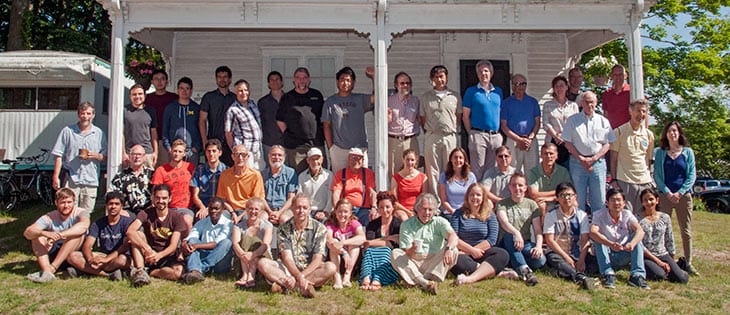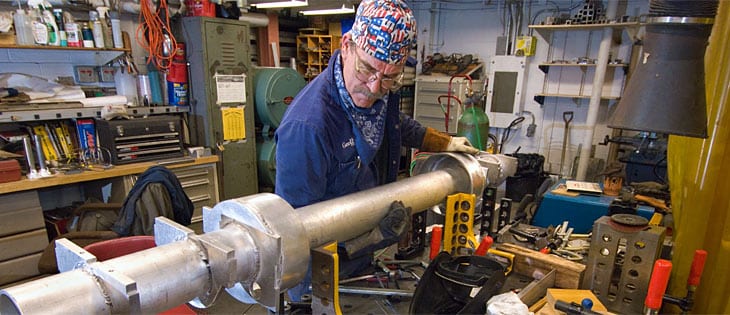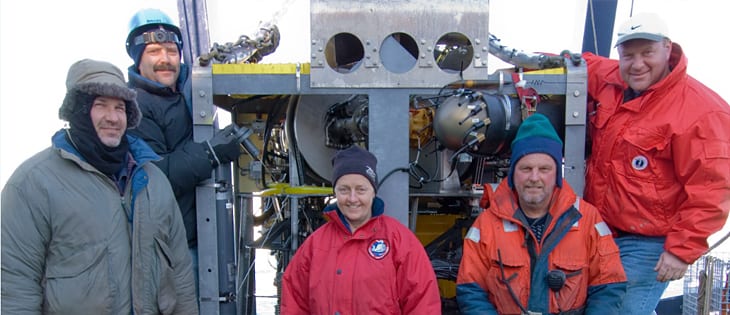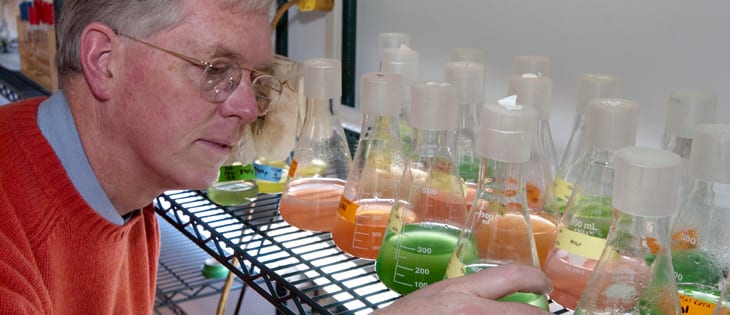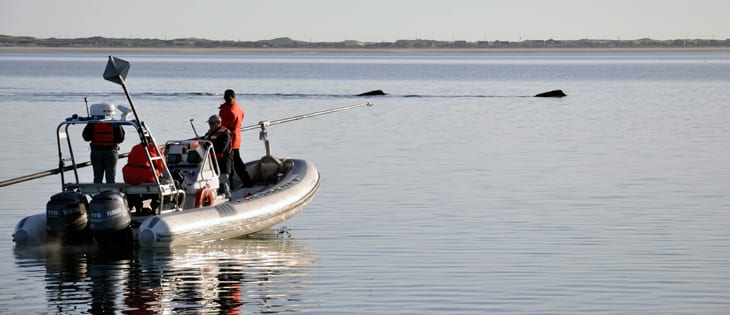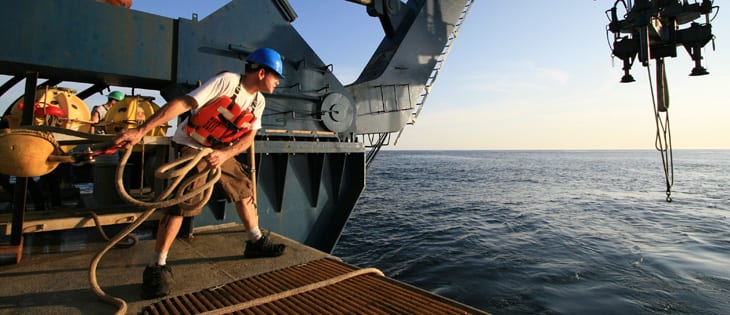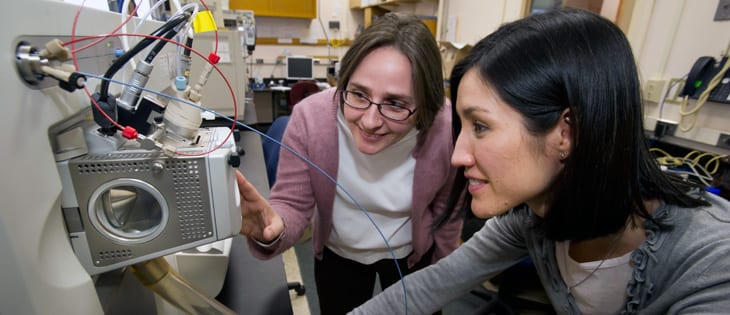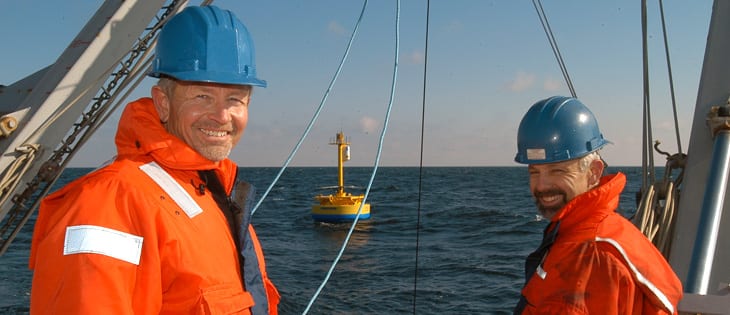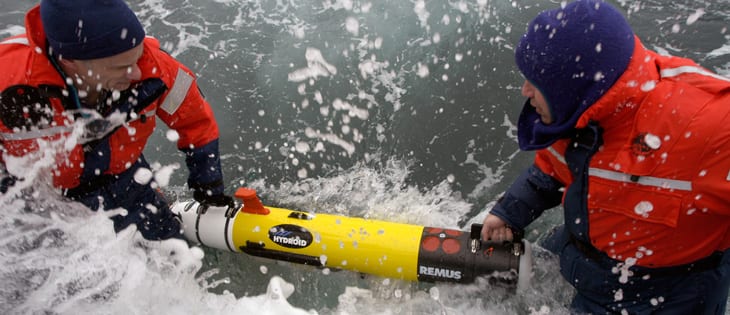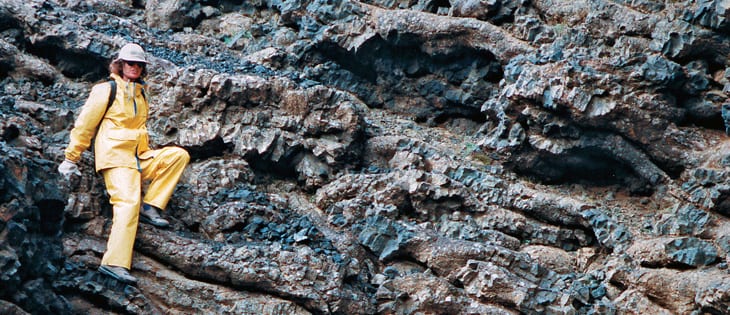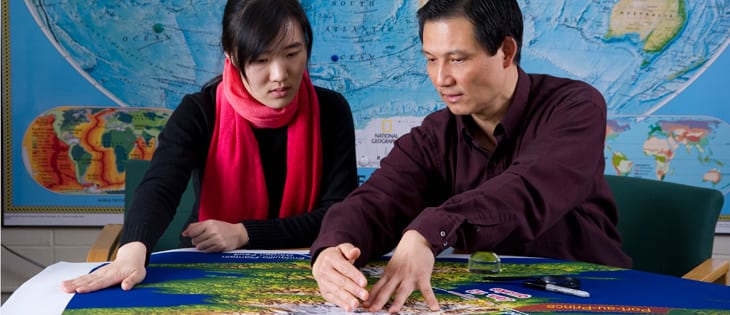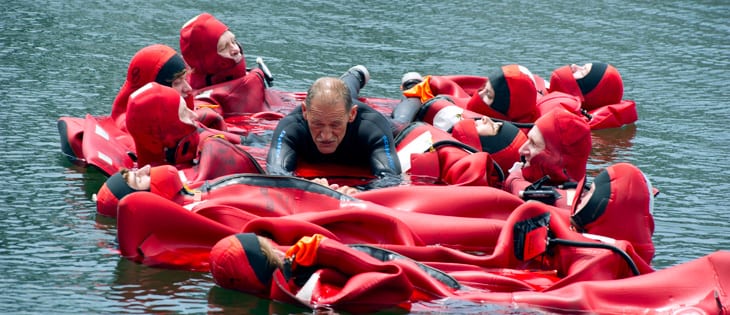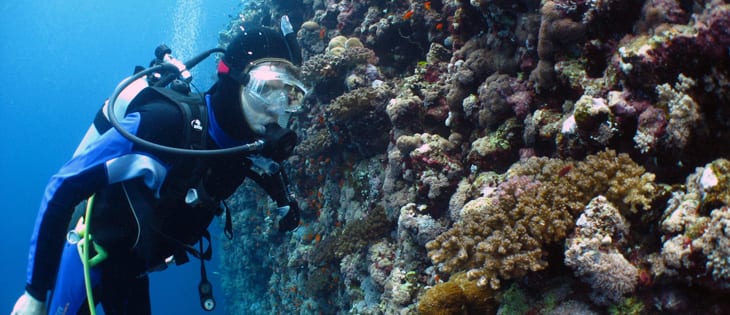- Since 1959, participants in the Geophysical Fluid Dynamics summer program have gathered in Woods Hole at Walsh Cottage for 10 weeks of lively debate on how water and other fluids move on Earth and in the atmosphere. The focus of this year's discussion, Climate Physics and Dynamics, has drawn graduate students and lecturers fom the United States as well as Australia, Denmark, France, Ireland, Italy, Israel, Canada, India, Germany, Puerto Rico, China, and Uganda. Over its history, the program has produced hundreds of alumni, many of whom are prominent scientists at universities throughout the world. (Photo by Jayne Doucette, Woods Hole Oceanographic Institution)
- Lead welder Geoffrey Ekblaw works on the HROV Nereus framework. (Photo by Tom Kleindinst, Woods Hole Oceanographic Institution)
- Members of the Camper camera and sampling team gather on the fantail of the icebreaker Oden before the last launch of the vehicle in the Arctic Gakkel Vents Expedition. From left: Phil Forte, who piloted the winch and wire that maneuvered Camper near the seafloor; John Bailey, who built Camper and operated its sampling devices; WHOI geochemist Susan Humphris; John Kemp, head of deck operations; and WHOI biologist Tim Shank. (Members of the Camper camera and sampling team)
- To learn more about what whales do when they dive beneath the surface, scientists use a digital acoustic recording tag, or D-tag. The small device, designed and developed at WHOI, attaches via suction cups and records the movements of whales and the sounds they make and hear in the ocean. (Image collected pursuant to NOAA Permit No. 775-1875, Photo by Ed Dow, III, Woods Hole Oceanographic Institution)
- Marine chemist Elizabeth Kujawinski (left), researcher Melissa Kido Soule (right), and colleagues recently found that a main component of a chemical dispersant used during the Deepwater Horizon spill to break up the oil persisted for months deep in the Gulf of Mexico. The chemical remained mixed with oil, but was not degraded by bacteria that consumed the oil, raising questions about its possible impact on deep marine ecosystems. Kujawinski, Kido Soule, and others identified the chemical with an ultra-sensitive mass spectrometer, funded by the National Science Foundation, and then developed quantitative methods to measure minute amounts of the chemical so that it could be traced through the Gulf. (Photo by Tom Kleindinst, Woods Hole Oceanographic Institution)
- Senior Research Specialist Dan Frye and Senior Engineering Assistant Will Ostrom savor another successful buoy and mooring deployment by the WHOI mooring and engineering team. The research team set Gumbymoor—a mooring system that uses ultra-stretchy rubber hoses, reinforced with nylon, that can stretch to twice their unstretched length. (Photo by Jayne Doucette, Woods Hole Oceanographic Institution)
- Al Plueddemann and Glen Gawarkiewicz prepare to launch REMUS, an autonomous underwater vehicle, from R/V Tioga during a survey in shallow water off Chatham, Massachusetts. (Photo by Christopher Linder, Woods Hole Oceanographic Institution)
- WHOI geologist Debbie Smith explores volcanic terrain in Iceland. The island provides a land-based laboratory for oceanographers to study lava formation and flow. (Image courtesy Debbie Smith, Woods Hole Oceanographic Institution)
- WHOI geophysics guest student Tingting Wang and senior scientist Jian Lin (right) study Haiti earthquake data on charts. Lin has studied Haiti and other tectonic areas of the Caribbean and has served as a science source for newspaper, radio and television coverage of that quake, as well as subsequent earthquakes in Chile and China. He cautions that future quakes in Haiti could strike a segment of the Enriquillo Fault very close to the capital city and urges rebuilding of emergency government structures in safer areas outside of Port-au-Prince. He is also working on a major seismic study of fault zones in Algeria. (Photo by Woods Hole Oceanographic Institution)
- (Woods Hole Oceanographic Institution)
Image and Visual Licensing
WHOI copyright digital assets (stills and video) contained on this website can be licensed for non-commercial use upon request and approval. Please contact WHOI Digital Assets at images@whoi.edu or (508) 289-2647.

